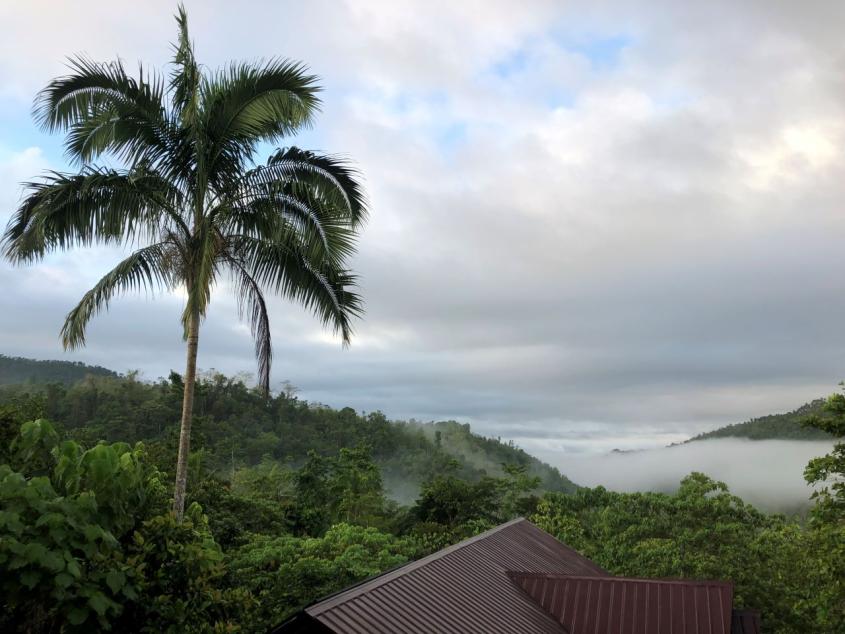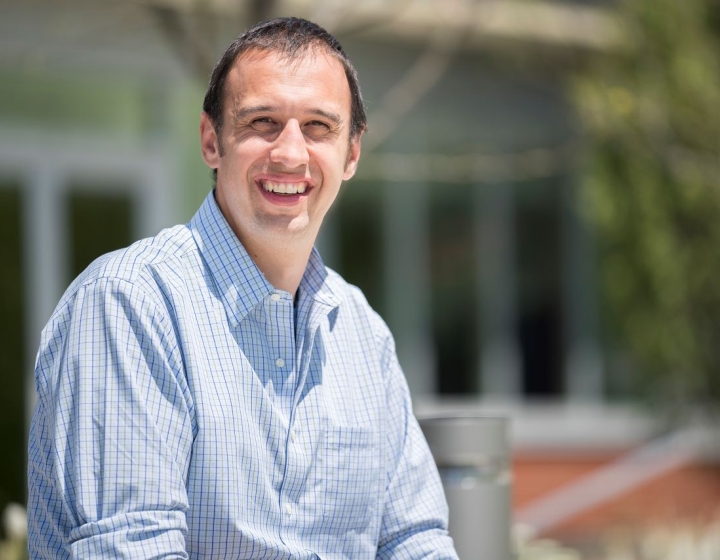Student blog: Conservation medicine in the Philippines
I hugged the large cooler on my lap as we drove through the city of Bayawan. Inside was fragile blood sampling equipment that traveled with me from the States. I would need these later for my main project – collecting blood and establishing baseline values for endangered hornbill species. I looked out the window as the sun set over rice fields crowded with water buffalo and stressed over whether the dry ice was still intact after a long series of flights, taxis, and buses. Finally, we came to our destination where the precious cargo was placed in a refrigerator, and I could worry about them later. It was now time to begin our descent into the rainforest.

The Bayawan Nature Reserve
My project, made possible by the Cornell University College of Veterinary Medicine (CVM)'s Expanding Horizons International Education Program, began in the middle of the 300-hectare Bayawan Nature Reserve, one of several locations under the Talarak Foundation Inc. (TFI), an organization dedicated to conserving species endemic to the West Visayan Faunal Region of the Philippines. They focus on the West Visayan “Big Five” – Visayan spotted deer, Visayan warty pig, Negros bleeding heart dove, Visayan tarictic hornbill, and rufous-headed hornbill – as these species are some of the most endangered but also crucial ecosystem engineers. By focusing on their conservation, the foundation creates holistic protection of the various habitats and species of this region. The reserve provides space for captive-bred members of the Big Five to be reintroduced and studied. Employees and volunteers monitor the animals to ensure they thrive and to learn more about their behaviors in the wild.
Every morning, I would venture across the undulating terrain to collect or place camera traps and look for evidence that animals were using the space. Warty pigs leave behind mud wallows and the deer scratch their antlers on trees, peeling away the bark. I sorted through camera trap images to record animal numbers and behaviors. If an image of a Visayan spotted deer showed enough of its body, I could compare its unique spot pattern to our catalog and figure out its name. All this data is helpful in determining what habitat each species prefers, optimizing future releases.

In addition to the thriving deer and pigs, we were also keeping tabs on the birds of the reserve. We watched via a camera trap as a wild male Visayan tarictic hornbill would bring food to our captive-bred female, Penelope, and her two fledglings. This was extremely exciting, not only because we captured a new male on camera but also because we recorded successful breeding between one of our released individuals and a wild counterpart. Once the fledglings were old enough, I worked with the TFI’s head veterinarian, Dr. Monica Atienza, to place leg bands and examine them – one male and one female. We also tracked two released Negros bleeding heart doves, Roger and Daphne, by using radio telemetry.
I also joined the outreach team to visit farmers that neighbor the reserve. We conducted surveys to discuss what kind of support they would find most helpful. This collaboration is one of many ways the TFI fosters positive relations between humans and wildlife. This is especially important now because we also had to discuss the concern of African Swine Fever, a deadly viral disease that has been severely impacting pig farms across the Philippines. The government wants farmers to sell their pigs early, but farmers may be reluctant since the pigs are not at their full weight. In response, the TFI is working with the local government to provide monetary incentives and make up for losses. It is a complicated issue to tackle, but these outreach programs help make people feel informed about issues affecting their livelihood.
Negros Forest Park, Bacolod
The bloodwork rotors and I made our next trip to another one of the TFI’s locations, Negros Forest Park in the city of Bacolod, so I could begin the research component of my project. This wildlife park houses endangered Visayan tarictic hornbills and critically endangered rufous-headed hornbills. There is limited literature on blood parameters for many hornbill species, so my goal was to collect their blood, compare the values to other hornbills, and establish normal reference ranges. I expanded upon my limited avian handling under the guidance of Atienza and researched scientific literature. I also worked on my microscopy skills by analyzing blood smears for cell abnormalities or parasites.
Hopefully, this information will aid veterinarians who care for hornbills worldwide. With the already challenging task of fighting habitat loss and harmful human activity, veterinarians need these core diagnostic tools to support the management of wildlife health. Blood values are also helpful in assessing breeding status and stress, which could improve their future breeding efforts.
When I was not working on the study, I was observing the development of our only juvenile rufous-headed hornbill. We wanted to document how these birds leave their nestbox with male colorations, then either retain these or switch to the female coloration. The rearing behaviors of these hornbills are not well documented, so I would conduct a daily log and see how the family’s behaviors changed as the juvenile grew.
Along with these learning opportunities, I gained adaptability as many unexpected obstacles arose. The presence of African Swine Fever in Bacolod meant that Negros Forest Park was closed for the entirety of my stay. I lost access to learning via interaction with park visitors and public outreach. I tried to take advantage of having greater access to the animals, so I created enrichment activities for all the hornbills and recorded how they responded. These ranged from crafting paper-maché, berry-filled piñatas to building bird swings. Though African Swine Fever brought its challenges, I also saw firsthand the severity of a biosecurity emergency, and the influence one veterinarian can have in the survival of an entire species.
I am so grateful to Cornell CVM’s Expanding Horizons International education program and the Dean’s Leaders Program for supporting this experience, as well as Dr. Atienza and the Talarak team for their guidance. This project has reinforced my passion for conservation medicine and provided another possibility for my future.
Ashley Broderick, D.V.M. Class of 2026, is pursuing a D.V.M. at Cornell University’s College of Veterinary Medicine. She graduated with a BS in Animal Science and a minor in Zoology from North Carolina State University. Her career interests include wildlife conservation and exotic animal medicine with a particular interest in herptiles.






